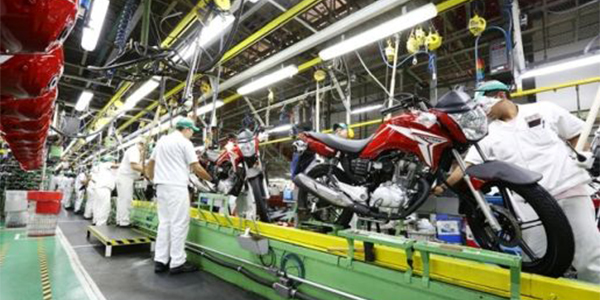Volume 10 | Issue 4

Honda Mexico is refocusing its attention to take advantage of market preference for sport utility vehicles (SUVs) by changing its production line to produce its CRV vehicle. CRV production will replace Accord production, which is being transferred to a plant in Marysville, Ohio, as “the Mexican market is demanding more SUVs, and the CRV is very appropriate for this market,” says Public Relations Manager Eduardo Aragon, adding, “The CRV is a versatile, familiar and efficient vehicle. It is a pilot, and we are focused on producing this automobile to the same quality standards as the Accord.”
He explains, “The manufacturing plan includes some changes to the vehicle with a budget of $80 million to retool the plant. In two years we will be able to manufacture 50,000 of these vehicles, with half for the Mexican market and half for export.”
That investment will see the expansion of production lines, the recruitment and training of more personnel that will boost headcount from 1,500 to 2,100, and the production of more parts. “This investment plan also includes opening a repair shop on June 1 that cost about $5 million. We are investing another $5 million in a training center for technical skills to allow us to give the best after sales service,” says Aragon.
Sign of the times
The company is currently outperforming many of its auto rivals in Mexico, posting growth of 12 percent in 2006 compared to 3-4 percent for competitors, and with vehicle sales of 50,000 units, it occupies the sixth or seventh spot in the market. Growth in Mexico has been organic and will continue to be so with the company aiming to sell 60,000 units in 2007, 10,000 more than last year, and with its sights set on eventual sales of 100,000 units a year. “That is a good chunk of the Mexican market,” he says.
That is an achievement given that during the 10 years that Honda has produced automobiles in Mexico competition has increased from six or seven brands to over 32, including those from America, Japan and Europe. “We are in a more difficult market than the American market as we have cars in Mexico from Italy, Germany, France, Japan, and from all over the place,” says Aragon.
Maintaining sales growth entails perceiving and responding to ever-changing consumer demands for both style and performance, which is becoming increasingly inseparable for environmental concerns such as greenhouse gas emissions.
“Market trends show people are more concerned for the environment and about gas emissions. Mexico is no stranger to pollution as Mexico City is one of the most polluted cities in the world, which means we have customers that really worry about this,” he says.
In response to this growing environmental concern and the contribution that automobile gas emissions make, Honda has invested significant sums in the development of next generation vehicles that move away from the use of gasoline as part of a global company commitment to reduce carbon dioxide emissions by 5 percent in its motorcycles, 5 percent in heavy trucks, and 5 percent in vehicles which adds up to a 10 percent reduction of the total emissions produced by Honda vehicles.
“Honda was the first, and is the only auto producer to have a hybrid vehicle in the market. It reduces emissions by 30 percent and it is a car that it can work with both gasoline and electricity, so it not only helps reduce the emission problem but is also good for user cost reduction. In Brazil we launched an ethanol vehicle, and with the boom of ethanol and clean energy sources, we launched [in 2006] a cell vehicle that runs on hydrogen in the United States and Japan,” says Aragon.
As part of its efforts to reduce emissions, Honda Mexico hopes to receive certification from federal environmental protection agency PROFEPA in June.
State-of-the-art capabilities
Maintaining an edge in the marketplace demands the use of the best technology available, says Aragon, to be able to offer the highest quality, not only matching the quality standards imposed by governments, but surpassing them. “We are known for having the highest quality standards and to have the best after sales service as we have managed to adapt the cars to Mexican market conditions. We set the benchmark in satisfying customers, which other companies try to follow. In Mexico, the government requires cars to be tested yearly but Honda’s are the only ones that can be used for two years before being tested,” he says.
Maintaining this position means working with suppliers so that they can produce the quality parts required when they are required. “We have been working with a list of between 40 and 45 suppliers, most of them national, for vehicle manufacturing and spare parts. We have high standards for our suppliers as there is not a single auto part that is going to be used if it is not produced under optimal conditions,” he says.
Scott Ellyson, CEO of East West Manufacturing, brings decades of global manufacturing and supply chain leadership to the conversation. In this episode, he shares practical insights on scaling operations, navigating complexity, and building resilient manufacturing networks in an increasingly connected world.